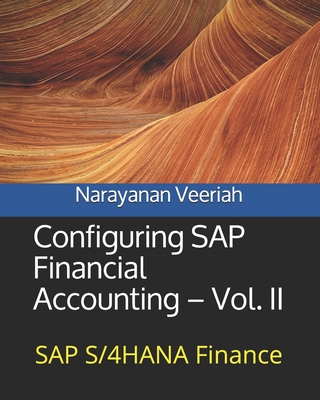This book on 'Configuring SAP Financial Accounting' in SAP S/4HANA Finance (1909), has been published in two volumes: Volume I and Volume II. The Vol. II (this book) covers: Configuring SAP Financial Accounting - Vol. I Case Study (Project Dolphin & Project Starfish) Accounts Receivable and Accounts Payable Contract Accounts Receivable and Payable Bank Accounting Asset Accounting In Vol. I of the title we have covered: SAP HANA SAP S/4HANA SAP S/4HANA Finance Case Study (Project Dolphin & Project Oyster) Enterprise Structure FI Global Settings I (Fields, Ledgers, Fiscal Year, Posting Period, Parallel Accounting, Integration of SAP CO with SAP FI, and Company Code Global Parameters) FI Global Settings II (Documents, Inflation Accounting and Correspondence) FI Global Settings III (Taxes including Extended Withholding Tax) General Ledger Accounting To give you an idea of what has been covered in 'Configuring SAP Financial Accounting - Vol. I', we have captured the details, in this book, in a Chapter-wise summary of that coverage with configuration highlights that has been discussed in each of those Chapters, from 1 to 9. The book covers Accounts Receivable (FI-A/R) and Accounts Payable (FI-A/P), in detail. It covers customer and vendor accounts, business transactions associated with both FI-A/R and FI-A/P and the information system. In business transactions, you will see topics like incoming invoices, release for payment, payments (outgoing & incoming, manual and automatic), dunning, open item clearing, down payment processing, adjustment posting, interest calculation and closing operations. In Contracts Accounts Receivable and Payable (SAP FICA), with a separate case study (Project Starfish), we discuss the functionality and the configuration required for setting up of SAP FICA for a business. In Bank Accounting (FI-BL), you will learn about bank master data (bank directory, house bank, business partner's bank, bank distribution etc.), bank chains, payment transactions including manual & electronic bank statement, lockbox processing, cash journal and online payments. The book covers Asset Accounting (FI-AA) in great detail. It covers the organizational structure, structuring fixed assets in FI-AA (including special forms of assets, asset classes etc.), integration of FI-AA with other SAP components including SAP FI-G/L, general & special valuation, depreciation, master data, transactions (like acquisitions, retirements, transfers, capitalization of assets un

![]() 24-48h
24-48h










